The TAPESTRY project is working in three different sites across India, creating opportunities for interactions with communities in marginalised environments to co-produce transformative change in sustainable development. In this blog post, Lalatendu Keshari Das shares news from the project’s Mumbai team, which is conducting action research that examines the ways in which fishing communities adapt to uncertainties in the city.
The Versova (Malad) Creek Restoration Project
More than 9000 tons of municipal solid waste is generated in the city of Mumbai each day (MPCB 2018). The Maharashtra Pollution Control Board (MPCB) and the Brihanmumbai Municipal Corporation (BMC) are mandated to take care of this waste. The BMC covers the richest urban local body in India. Despite the financial muscles of the BMC, only 20 per cent of the area’s solid waste gets recycled or used for better purposes. A large part of this solid waste finds its way into the nearby creeks, rivers and the sea[i]. Monsoon rains and tidal waves carry the waste to the sea, which returns it to the city during high tides as marine litter. One of the communities affected badly by this problem is the Koli fishing community who live in the fishing village of Versova.
A thriving seafood festival
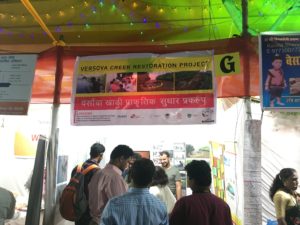
The Versova Koli Seafood Festival, held in January 2020, was the 14th edition of the event. This seafood festival is unique because it is managed by the Versova Koli fishers themselves. Since its inception, the festival has grown in popularity – in 2019, the event attracted up to 500,000 visitors over three days. Visitors from all walks of life come to visit the area during the festival.
The TAPESTRY Mumbai team members hail from Norwegian University of Life Sciences, Bombay 61, Kyoto University and IIT Bombay. They decided to host an information stall at the annual Versova Koli Seafood Festival, under the banner of the ‘Versova Creek Restoration Project’, to raise awareness about the problems facing the Kolis, and to collect feedback for their project.
[To read about the work the team had initiated previously with the local community in Versova, visit this blog post].
The Seafood Festival was divided into three sections: one section for cultural activities, a second for Koli foods and a third for institutions or sponsors who want to highlight their products, whether in terms of ideas or commodities. The TAPESTRY stall, which was in the third section, described the situation of the Versova/Malad Creek and explained interventions to restore the area.
the tapestry stall
The TAPESTRY Mumbai team organised their stall into three sections:
Section one: The situation of the Malad Creek within the changing ecosystem of Mumbai
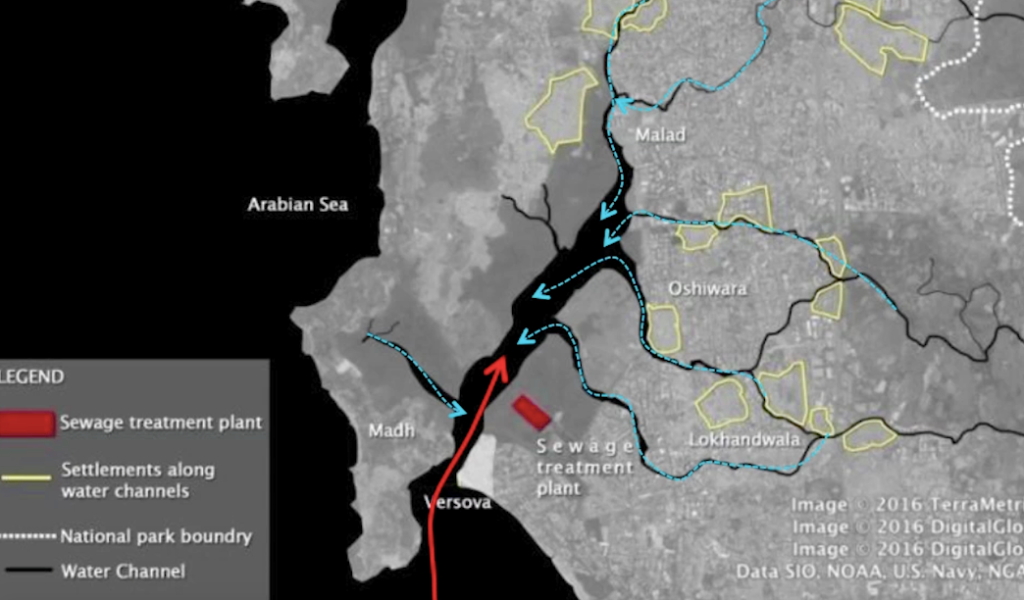
Posters and maps showed the creek in context with the Oshiwara river basin and illustrated how urbanisation in Mumbai has impacted it. The creek itself lies north of Versova and south of Madh Island in the north-west part of Mumbai (see map, left). The Oshiwara and Poisar rivers and stormwater drains, such as the Mogara Nallah, all drain their waters into the creek.
Over the past three to four decades the areas surrounding the Malad creek have seen massive urbanisation. A few industrial estates have been established, specialising in the manufacturing of paints, engineering tools and plastic and plastic-based products. This has led to the depletion of the area’s mangroves from about 1000 acres to just 400 acres. Mud flats created after the destruction of these mangroves have been converted to residential and office spaces, while a few areas have been left as illegal dump yards.
Meanwhile, for the entire suburban region – consisting of Versova, Andheri West, Lokhandwala, Oshiwara, Goregaon West, Malad West, and Kandivali West – there is only one sewage treatment plant, which is in Versova. This single plant is not able to handle the pressure. Construction of a new and larger treatment plant has been stalled by the Bombay High Court because the plan lacked environmental clearance. Moreover, the project aimed to cut down 25,000 mangroves, which caused disagreement between environmental activists and the municipal corporation.
Section two: Interventions made by the TAPESTRY Mumbai team
A video, co-created by Bombay 61 and Shibaji Bose explained the interventions made by the TAPESTRY team. It introduced the pilot phase Bombay 61 started with the Koli fishing community in Versova Koliwada regarding the impending crisis in the creek [Read a bit about the work of Bombay 61 in Versova.].
The fishers, particularly the women fishers, were eager to try a new method to control the solid plastic waste that was flowing into the creek. By following a process of co-production, the Koli fishers (both men and women) and the Bombay 61 team came up with the idea of installing nets across one of the drains to see the effects.
Within a fortnight of the installation, it was observed that a considerable amount of single use plastic and non-plastic waste got deposited in the net barrier.
Although the initial plan in terms of observation was successful, two very political issues emerged from this pilot. First, the barrier prevented not only the waste but also boats and fish from moving downstream. Second, the question of how to remove and relocate the waste was still an issue that needed resolving. So, the pilot would be viable if along with the community the municipal corporation is involved.
Section three: Co-producing the discourse
At the ‘ideas wall’, each visitor to the stall was invited to write their suggestions and opinion about the project. For example, one visitor suggested that nylon nets would not be effective in the long term when installed in the nallas (drains) because plastic and other solid waste would easily destroy them. Instead, he advised using steel mesh at regular intervals to overcome issues of tidal force and waste products getting caught in the nets.
Another visitor, commenting on the uniqueness of the stall, felt that in a predominantly food-related festival, the TAPESTRY stall was propagating food for thought.
sharing ideas, diversifying knowledge
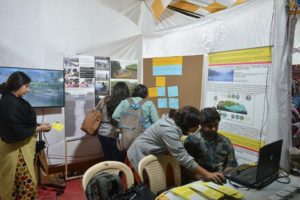
Over the three days an estimated 350 people visited the TAPESTRY stall: among them were local Koli fishers and their leaders, schoolchildren, doctoral researchers from the fisheries research institute in Versova as well as researchers from Finland, government employees, architects and trustees of NGOs. A few engineers from the IT industry also visited the stall.
A doctoral researcher from the fisheries institute who visited the stall suggested that the restoration project could be more effective if the network of women fishers in the area was taken into account. Women fishers are a major stakeholder in the catching and marketing of the fish resources in the creek (the TAPESTRY project team in the Sundarbans is also considering the role of women in similar activities, as this blog post from the Sundarbans team demonstrates). Moreover, mostly these fisher women use traditional methods of catching fish, which is in-keeping with a resource depletion and adaptation point of view.
Similarly, a young couple working for the IT industry suggested that the plastic waste salvaged in the fishing nets could be used for creating products that can be resold. This, according to the respondents, might not solve the plastic pollution in a major way, but will give the fishing community an added incentive to participate in the TAPESTRY project. The income associated with this activity will provide the young Koli boys and girls with added pocket money.
A ‘Brilliant start’: feedback and reflections for the tapestry team
Bombay 61 collected and collated the feedback from the festival thematically. Four themes were identified as important:
1. cleaning the water bodies
2. providing alternative livelihoods for fishers
3. involving young people in the dissemination of knowledge about climate change, mangroves and fisheries
4. involving the Maharashtra state government and its infrastructural projects in community-led development initiatives.
The visitors were of the opinion that the interventions proposed and piloted by TAPESTRY were crucial for the well-being of the fishers and the future of the marginalised environments in which they live. All the stakeholders, ranging from fishers, TAPESTRY researchers, Bombay 61 and governmental agencies, have to come together to give sustenance to sustainable development.
One visitor, who signed as KXJ, commented, ‘Brilliant start to initiate a dialogue and on-site support/ information/ mobilisation. In addition, would love to see how government projects like the coastal road affect and get affected by the climate change projections and sea level rise … How can industrial pollutants be neutralised at source? By increasing tax on the firms or by installing physical filter system?’
This intervention at the fish festival was significant to the TAPESTRY project team. At the team’s August 2019 ideation workshop in Versova, the pollution in the Malad creek was raised by the koli fisherwomen. Similarly, the fish festival stall feedback had a strong gender-justice influence. As a fisherwoman described, the Malad creeks have been like savings accounts for them: anytime they need some urgent finances, they could simply walk into the creek and with a small net catch a few kilograms of fish. Since the Malad creek started getting polluted, fish catches have decreased drastically. A restored creek would go a long way towards supporting sustainable livelihood options for the marginalised in the the Koli community of Versova.
[i] As has been observed by long term reports (Sharma and Chandel 2016).
READ MORE
The TAPESTRY project examines how transformation may arise ‘from below’ in marginal environments with high levels of uncertainty, and how this could be scaled up and out.
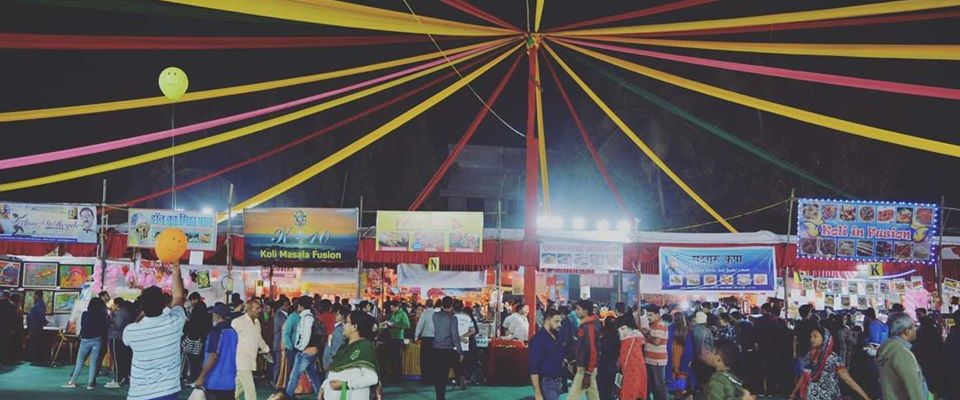
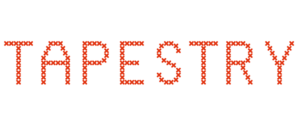
A very interesting piece Lalatendu